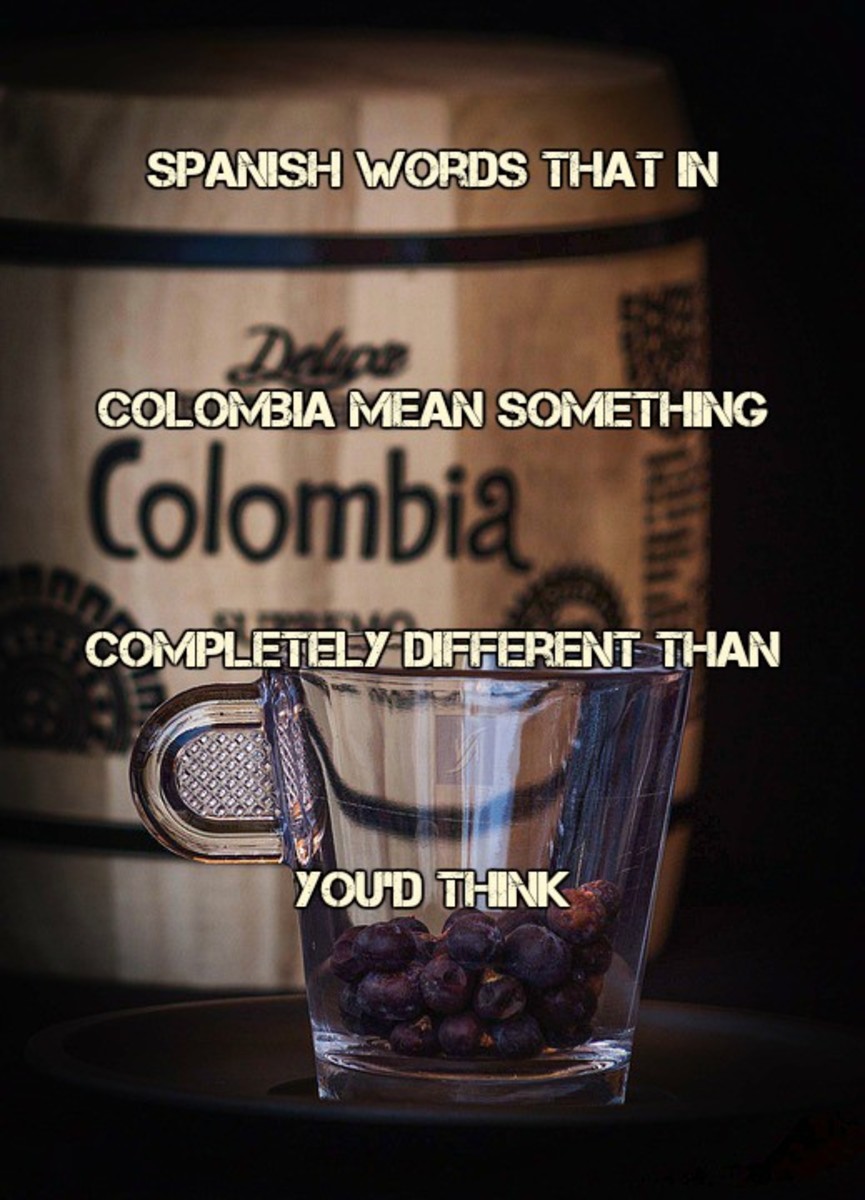Spanish Lesson Six: Nouns, Gender, and Articles

Before You Read
Another week has passed by already! I cannot believe it! It seems like every time I finish one of these, it's time to write another. :P It's time to continue learning Spanish "A Little At A Time". This is an idea I came up with seven weeks ago. Wow, how the time goes by. These lessons are meant to be short and help you gain a steady fluency in the Spanish language. For those of you who have been reading, I hope you have found this information useful and are indeed retaining some of it. For those of you joining in for the first time, take a look at the previous lessons you've missed. The link is below.
Last week we began our three part series about the most important parts of speech: Adjectives, Verbs, and Nouns. Last week we discussed Verbs and how to conjugate verbs in the Present Indicative tense. We also discussed adjectives in the lesson prior to that one. This lesson is the last of the three part series that discusses the Spanish noun. I brushed up against this topic in an earlier lesson, here I'll elaborate a bit more. If you've forgotten some stuff and want to review the last few lessons, click on the link below.

Today's Vocabulary
Today we are discussing Nouns, Gender, and Articles in the Spanish language. You should notice one thing now when I begin introducing new vocabulary. Each noun has an article that is the equivalent to "the" in the English language. You've learned that each noun and adjective reflect gender. Feminine nouns will have the article la in front of them while those that are masculine/neutral will have the article el. Take note that el does not have an accent and therefore is not equivalent to él which means "he" in Spanish. Take a look at these words, take note that just because a word ends in -a, does not make it feminine. Some words break the norm.
6. El día- Day
7. El mañana- Tomorrow/Morning
8. El cuaderno- Notebook
9. El telefono- Telephone
10. El cielo- Sky
1. La televisión- Television
2. La computadora- Computer
3. La puerta- Door
4. La césped- grass
5. La ventana- Window

Warm-Up
Find the congnates in your vocabulary list. These are words that look very close to their English equivalent. Sometimes these words can help you more than you know! :)
Spanish Nouns and Genders
Okay, so we've got some nouns and they have their gender. The left panel of your vocabulary list is all feminine and the left panel is all masculine/neutral. You'll note that some of these verbs don't have cut and dry indication if they're masculine or feminine. The best advice I can give you is learn them and don't forget. That's the best I got! When beginning to formulate sentences, use the articles in front of the words so you can better remember their gender. When discussing the nouns, you don't need to specify the article unless you want to. El and La can mean "the" in the sentence when referring to a noun, but can also just be there just for your own benefit. Take this sentence.
¿Cómo está vida?- How is life?- That's a mighty fine sentence. If you want to remind yourself that vida is feminine, just ask someone: ¿Cómo está la vida?- No, the "la" won't make your sentence silly. It'll get ignored, I promise.
Spanish Articles
Articles in English are adjectives used to describe the noun. The A, An, and The we hear so much about. In Spanish articles are used the same way. The following chart is used to help you describe your subject or subjects. Articles act in respect to gender as well. Remember Ellos and Ellas?... Ellos is masculine or mixed, Ellas is completely feminine. Take that into consideration when observing the articles placed in the chart below.
Masculine/Mixed
| Feminine
| |
|---|---|---|
Singular
| Un
| Una
|
Plural
| Unos
| Unas
|
Masculine/Mixed
| Feminine
| |
|---|---|---|
Singular
| El
| La
|
Plural
| Los
| Las
|
Explanation #1
Alright, so that probably didn't make any sense. The first chart is used to discuss Un, Una, Unos, and Unas. These are articles. The first two words, Un and Una are used to specify singular subjects. Think of it as the Spanish equivalent for "a". Here, take a look.
Libro means "book" and is masculine. Your chart specifies "Un" for a singular, masculine/neutral object. Therefore Un Libro would mean "A Book"
Unos specifies plural (or a group of) masculine objects. Think of it as the Spanish equivalent for "some". Therefore Unos Libros would mean "Some Books"-- remember that the noun also becomes plural in this case. Una and Unas are used in the same way for feminine singular and plural objects or groups.
Explanation #2
El, La, Los, and Las. This is basically the same idea as Un, Una, Unos, and Unas. El and La as you already know are specified towards singular masculine and feminine objects. Los and Las are used to specify groups of objects as well. When your noun becomes plural, its article must become plural as well. When talking about a group of books you would say Los Libros. If you want to discuss some chalkboards, you would say Las Pizarras. Note again that article AND noun are both plural. Gender and number agreement are common problems among Spanish learners. Heck I had those problems myself!!

Homework
Take a look at this awesome Youtube video to get some practice!! :) There are some elements in this video we have not discussed such as Estar, the other verb meaning "to be" in Spanish. Don't worry, that lesson will come sooner or later. Next week we're going to learn about Essential and Irregular Verbs. Estar will be introduced as well!!








